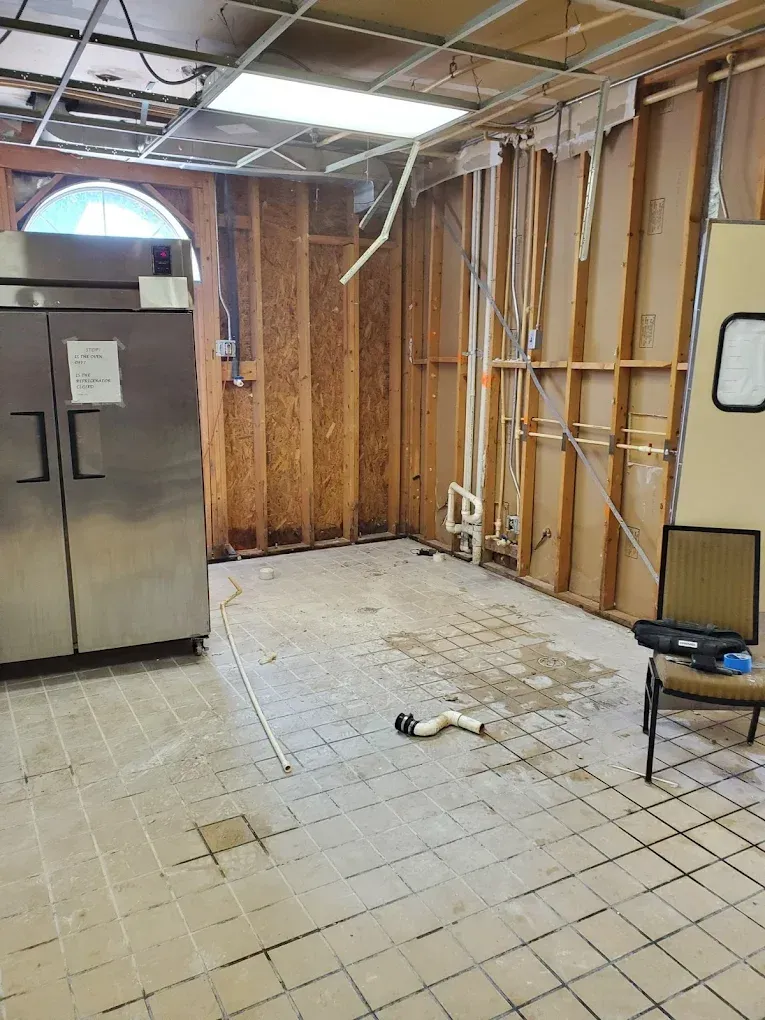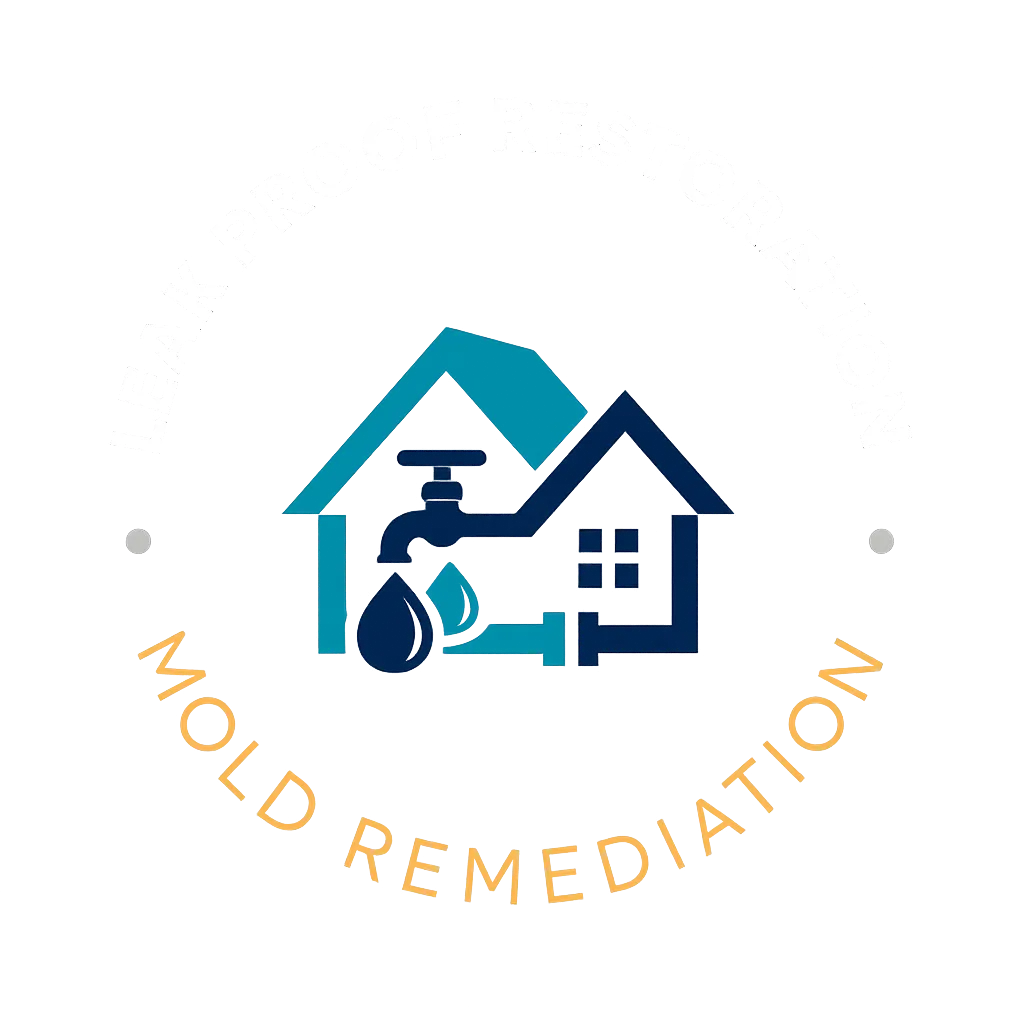
How to Remove Smoke Damage and Odor After a Fire | Leak Proof Restoration
How to Remove Smoke Damage and Odor After a Fire
Even a small fire can leave behind more than visible damage. Smoke, soot, and lingering odors can infiltrate walls, ceilings, and personal belongings long after the flames are gone. Understanding how to properly clean and restore your home after smoke damage is essential to protecting both your property and your health.
At Leak Proof Restoration, we specialize in full-service restoration, including fire and smoke cleanup. This guide provides a detailed step-by-step process to help homeowners handle smoke damage efficiently and safely while knowing when it is time to call in professionals.
Step 1: Assess the Type and Extent of Smoke Damage
Not all smoke damage is the same. Identifying the type of smoke and how far it spread helps determine the right cleaning approach.
Wet smoke: From slow, smoldering fires that produce thick, sticky residue and a strong odor. Often from plastic or rubber materials.
Dry smoke: From fast, high-temperature fires. Leaves behind a light, powdery residue that spreads easily.
Protein smoke: From burned food or grease. Often invisible but leaves behind a strong odor and thin film on surfaces.
Fuel or oil smoke: From furnace puff backs or oil-based fires. Creates heavy, greasy soot that is difficult to remove.
Inspect each room, including areas far from the fire source. Smoke travels through HVAC ducts and open doorways, leaving residue in hidden areas such as closets, attics, and crawl spaces.
Step 2: Ventilate the Home
Proper ventilation is the first step in minimizing smoke odor and improving air quality. Open all windows and doors to allow fresh air to circulate. If safe to do so, use fans to push smoky air out of the home.
Avoid turning on your HVAC system before it has been professionally cleaned. Running the system can spread soot and odors throughout the ductwork and into unaffected areas.
Step 3: Protect Yourself Before Cleaning
Smoke and soot contain fine particles and chemicals that can irritate your skin, lungs, and eyes. Before beginning any cleaning, wear:
A respirator or N95 mask
Nitrile gloves
Safety goggles
Long sleeves and pants
If you have respiratory issues or the damage is extensive, avoid doing the cleanup yourself and call a certified restoration company.
Step 4: Remove Loose Soot and Debris
Use a vacuum with a HEPA filter to gently remove loose soot from surfaces, starting from the top of the room and working downward. Avoid pressing too hard, as this can push soot deeper into surfaces.
For walls and ceilings, use a dry sponge or chemical sponge designed specifically for soot removal. Wipe in straight, gentle strokes. Replace sponges often, as they become saturated with soot quickly.
Do not use water or liquid cleaners at this stage. Soot mixed with moisture can smear and permanently stain porous materials.
Step 5: Clean Hard Surfaces
Once the loose soot is removed, it is time to clean hard surfaces like countertops, floors, and furniture.
Mix a solution of warm water, mild dish soap, and white vinegar. Use a soft cloth to wipe surfaces in small sections. Rinse frequently and change your cleaning solution as it becomes dirty.
For tougher stains or smoke residue, a commercial degreaser or alkaline cleaner may be necessary. Always test a small area first to ensure it does not damage paint or finishes.
Step 6: Clean Walls and Ceilings
Smoke can cling to paint, drywall, and wallpaper. Begin by using a dry cleaning sponge to lift as much residue as possible. Then, wash the area using a gentle cleaning solution of water and mild detergent.
Rinse with clean water and allow to air dry completely. Avoid using ammonia-based cleaners, as they can make the smoke odor worse.
If the paint is discolored or stained, repainting may be necessary. Always use a primer designed to seal in odors before applying new paint.
Step 7: Deodorize Fabrics and Upholstery
Fabrics absorb smoke quickly, and standard washing may not eliminate the smell.
Wash clothes, bedding, and curtains with a mixture of laundry detergent and one cup of white vinegar.
For items that cannot be machine washed, consider using an ozone or thermal fogging treatment to neutralize odors at the molecular level.
Upholstered furniture should be professionally cleaned to remove deep-set smoke particles.
Vacuum carpets and rugs using a HEPA-filtered vacuum. Sprinkle baking soda over the surface and let it sit for 24 hours before vacuuming again to absorb lingering odors.
Step 8: Clean HVAC Systems and Air Ducts
Your home’s air system can spread smoke and soot particles long after the fire is extinguished. It is important to have a professional clean the ducts, vents, and air filters.
Replace all HVAC filters and consider installing HEPA filters to improve air quality during the restoration process. Air purifiers can also help capture fine smoke particles still circulating in the home.
Step 9: Neutralize Odors with Professional Equipment
Smoke odor lingers because tiny particles penetrate materials that standard cleaning cannot reach. Professional restoration companies use advanced tools like:
Ozone generators: Break down odor-causing molecules in the air.
Hydroxyl generators: Safe for occupied areas, these neutralize odors without chemicals.
Thermal foggers: Recreate the conditions of smoke to reach deep into surfaces and neutralize embedded particles.
Leak Proof Restoration uses these methods to fully eliminate odors rather than just mask them.
Step 10: Restore and Refinish Damaged Surfaces
Once the home is cleaned and deodorized, repairs can begin. This may include:
Repainting stained walls or ceilings
Replacing damaged drywall or insulation
Refinishing wood surfaces
Deep-cleaning tile and grout
Installing new flooring if necessary
At this stage, your home should look, smell, and feel clean again. Always complete a final inspection to ensure no smoke odor remains before moving back in.
Step 11: Prevent Future Smoke and Fire Damage
While not every fire is preventable, a few safety steps can reduce risk and minimize damage.
Install smoke detectors in every room and test them monthly.
Keep fire extinguishers easily accessible in the kitchen, garage, and laundry room.
Avoid leaving candles, cooking appliances, or space heaters unattended.
Schedule annual maintenance for your heating and electrical systems.
By keeping your home well-maintained and responding quickly to any fire or smoke event, you can significantly reduce restoration costs in the future.
When to Call Leak Proof Restoration
If the smoke damage covers a large area, affects multiple rooms, or involves heavy soot and odor, professional help is the best choice. Leak Proof Restoration provides complete smoke and fire restoration services, including inspection, cleaning, deodorization, and rebuilding.
Our certified technicians use specialized equipment and safety-tested cleaning agents to restore your home quickly and safely.
We are available 24 hours a day for emergency service and can work directly with your insurance company to make the process stress-free.
Final Thoughts
Recovering from a fire can be overwhelming, but with proper cleanup and professional help, your home can be restored to its pre-loss condition. Acting quickly to remove smoke and soot will protect your property from further damage and create a healthy living environment.
Leak Proof Restoration is dedicated to helping homeowners in Georgia recover from smoke and fire damage. With expert restoration and odor removal techniques, we ensure your home is clean, safe, and comfortable once again.
